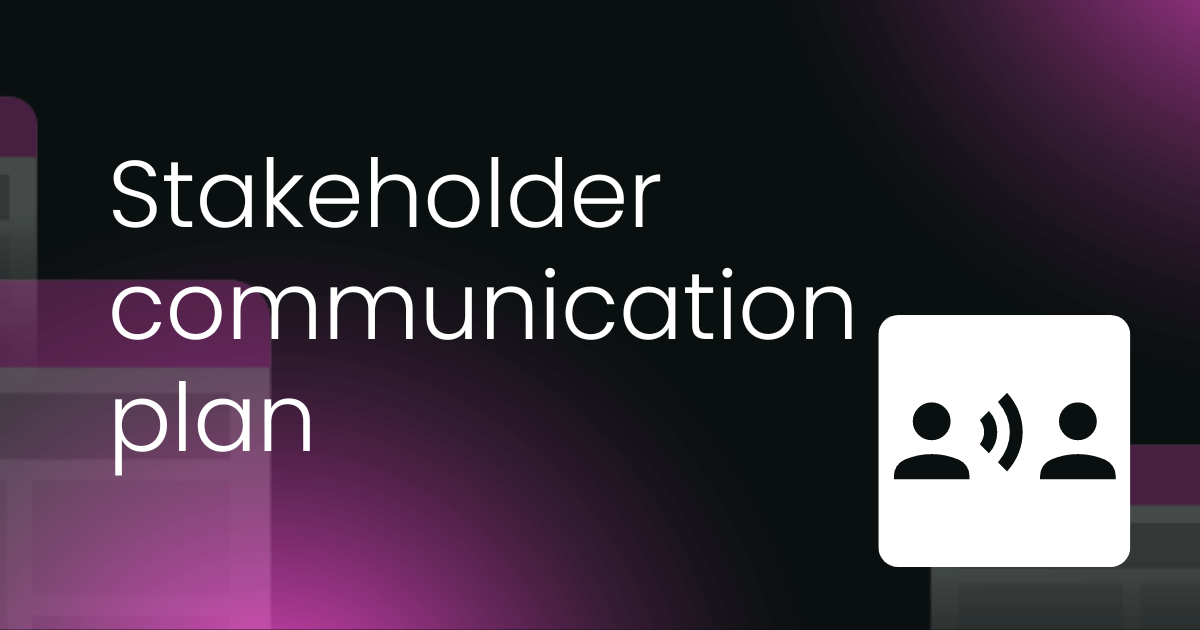Many companies grow more through acquisitions than they do organically. While this is a desired path for shareholders and senior leaders, it does tend to disrupt day-to-day life and can be a source of anxiety for both employees and clients due to the volatility and uncertainty of the situation.
But this structural change is felt even more keenly by customer success managers (CSM). As customer-facing professionals, we’re weathering the storm from both angles; we’re employees but also the trusted advisors who our customers will turn to to understand the impact acquisition or merger will have.
As CSMs, our ultimate focus is to improve the customer’s experience. While this is our job and often the force driving us to work in a customer-faced role, we are also individuals with our own lives and careers.
In this article, I will address personal challenges first and only then focus on the customer experience during the time of change.
How mergers and acquisitions affect you on a personal level
Risks of mergers and acquisitions
I’ve been through a few of these myself over the years and they always impact both sides of the coin, whether you’re the acquiring company or acquired. Sometimes people see it as “we acquired them, so our jobs are safe.”
I hate to break it to you, but it doesn’t work this way.
Managers responsible for integrating different departments will look at the new team and decide to try to keep the best people on the job. Naturally, everyone gets a little anxious about job security when acquisitions happen.
While being nervous is normal, try to keep your ears and eyes open to the changes in the company. Your global strategy may or may not change, and the same goes for operating modules.
But even if these things don’t change, your role could metamorphize, your portfolio may expand with new clients, or your team could be sown with new members.
There’s no point sugarcoating it: there’s a high chance that something will change, and you will be asked to adapt.

Opportunities in mergers and acquisitions
However, one of the criminally misunderstood things about acquisitions is that these structural changes are often a time of opportunity. Acquisition and mergers are usually followed by reorganization, which can open doors to:
- Mentoring new team members,
- Joining new project groups, or even
- Putting your name in the mix for a team leader or manager opportunity.
Of course, these opportunities won’t always happen, and when they do, you’re likely to experience a fair bit of competition for each new position. However, if you’re looking for new opportunities inside the company, it’s worth having a discussion with your manager.
Don’t wait for them to ask
- Line managers aren’t mindreaders
- Showing initiative is always appreciated
Tell them that you understand there will be evaluations of processes and changes, and that you’re interested in participating. Expect a question about how you would balance potential project work with your portfolio and have at least some ideas ready.
It’ll show that you’re serious and are considering the wider company view, not just pursuing your own promotion.
As customer success managers we’re always encouraging change for our customers, to drive the adoption and expansion of our services. It’s no secret that, from time to time, we complain about the customers who don’t want to change, those who drag their feet about it.
But here’s the thing – our line managers and senior leadership look at us the same way the way we look at our customers. They're asking: Who’s willing to change and adopt a new strategy and operational plan? Who’s constructively contributing? Who’s resisting the change?

My personal advice during a period of change?
Keep an open mind.
If you feel strongly that the changes will create a risk for the company, ask questions, and explain your reasoning.
However, once the path forward is decided, embrace it and help finetune where possible. Make sure you are on the path moving forward and not a team member moving in the wrong direction.
The impact of mergers and acquisitions on your customers
When a company is acquired, customers will have questions about what it means for them. Answer the questions in line with official communication. Try not to speculate with the customers, especially if you are a publicly traded company.
Communication
Typically, the acquiring company informs the target company of the acquisition (and its own staff) a few hours before the public announcement. Remember to read the notification carefully and read the answers to frequently asked questions, if provided.
Be clear
You can expect that some of the answers will be in line with, “We're working on it and will let you know the details as soon as possible.”
These are the answers you provide your customers who will come to you with questions. Never speculate or make vague promises. Instead, focus on taking care of your customers the same way you always do – consistency during this time is absolutely essential.
The internal communication will be, in most cases, carried out when the next steps are finalized and the necessary dotted lines have been signed. The company must be ready for it.
Be agile
Communication will sometimes be for everyone and sometimes on a need-to-know basis. Keep up to date with changes and make sure you understand what is public and what is internal.
I already mentioned your personal interest in keeping up to date with the changes. It’s also part of your job responsibilities so you can answer customer questions about the changes impacting them.
The changes resulting from mergers and acquisitions can affect various aspects of company operations, such as:
- Company-organized events
- Account management structure
- Support portal
- Standard terms and conditions
While some of these changes will fall under your responsibility to guide customers through, others may not. However, if customers consider you a trusted partner, they might reach out to you for various reasons:
- To better understand the changes
- To verify that communications from new email addresses are indeed from your company
Staying informed about these changes helps you maintain your customers' trust and expand your influence within the organization

An acquisition and merger example
Let’s look at an example of acquisition and merger. For this, I will use some of the experiences I had with acquisitions in the past so enjoy the journey. For anonymity’s sake, we’ll call the acquiring company “Alpha Tech” and the acquired company “Genius Solutions.”
For reference, Alpha Tech is an established company that has software solutions in finance technologies. They wanted to expand the coverage of the process and acquire Genius Solutions to get the coverage of the upstream processes to their current solution. A simple example in the manufacturing industry would be assembling cars and acquiring the manufacturer of car seats.
Initial communication and strategy
The press releases announcing the decision for both companies were similar:
“Alpha Tech acquired Genius Solutions to expand our footprint in the industry. We’re looking forward to integrating the products and improving the services to our customers.”
It’s worth noting that the internal communication also included a prompt to the salespeople in both companies to begin cross-selling the services.

Integration challenges of the merger
A few months later the leader of the local customer success team (the acquiring company, Alpha Tech) started integrating the acquired team into the wider organization.
Now, this is where the challenges started. Because Genius Solutions was a smaller organization, it didn’t have as many departments and as distinct roles as the Alpha Tech company had.
Role disparities
The customer success managers in Genius Solutions had responsibilities outside of the “traditional” customer success remit. For instance, they’d been in charge of account management, renewal negotiations, support escalations, and writing product documentation.
As part of the merger, Genius Solutions' CSMs had to align with Alpha Tech's more specialized definition of the role.
Service level changes
Consequently, some services previously offered by Genius Solutions CSMs were discontinued, creating gaps in customer support.
As you can expect, this decision prompted some of Genius Solutions’ long-standing customers to start looking for an alternative smaller company that could offer them the personalized service level to which they’d been accustomed.
Naturally, this wasn’t a universal problem; others were happy with the opportunities opened to them due to the integration of services between the two companies.
During the transition period, CSMs from both companies faced a steep learning curve:
- Genius Solutions’ CSMs had to familiarize themselves with Alpha Tech's product lineup.
- Alpha Tech’s CSMs needed to learn about Genius Solutions' offerings.
However, a major challenge emerged for Alpha Tech CSMs. Despite receiving training on Genius Solutions' products, many didn't work with these new offerings for a year or two. This gap between learning and application led to knowledge retention issues.
Customer reactions
So, when they got some customers, they were utterly lost. Let us be honest here: do you still remember what training you did two years ago if you never had to use that knowledge? I didn’t think so.

Product differences and service models
The other challenge that appeared was that Alpha Tech software enables users to do the majority of the changes as self-service.
Due to that setup, the CSM can guide them through trying new things and influence the change in adoption. Genius Solutions had a different setup where changes, even small ones had to be done by the services team.
But the confusion didn't stop there.
Internal confusion and adaptions
Teams outside customer success were struggling to understand what any of this meant for their CSM colleagues' work. Eventually, it boiled down to this: sales and marketing realized they could no longer offer the original level of guided optimization typically included with Genius Solutions' product.
Instead, they needed to involve professional services and sell these services separately, as they were mostly billable.
Ongoing education and adjustment
Educating internal stakeholders on the differences and what CSM can offer for each of the solutions is a continued work in progress even years later.

Conclusion
During the weeks, months and sometimes years after acquisition, focus on delivering the best possible service to your customers. It is important to understand that even if your whole work world is changing constantly, you are the person who needs to deliver consistent service to your customers.
Do not lose the view of customer experience, it waits for no one. The customer is still your customer and changes in your organization should have minimal impact on them, unless, of course, your business strategy completely changes. In that case, make sure you understand the transition plan clearly and empathetically.
While focusing on delivering the level of service your customers and your company expect, remember that this is also a time of opportunity if you are looking for a lateral change of work responsibilities or a promotion.



 Follow us on LinkedIn
Follow us on LinkedIn




